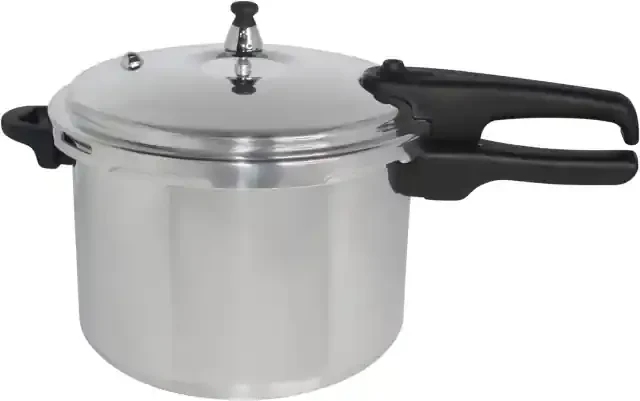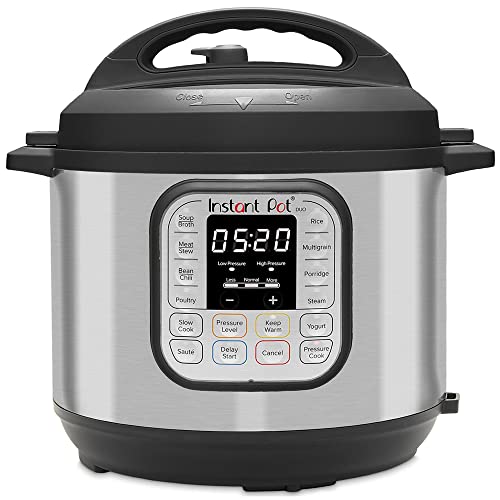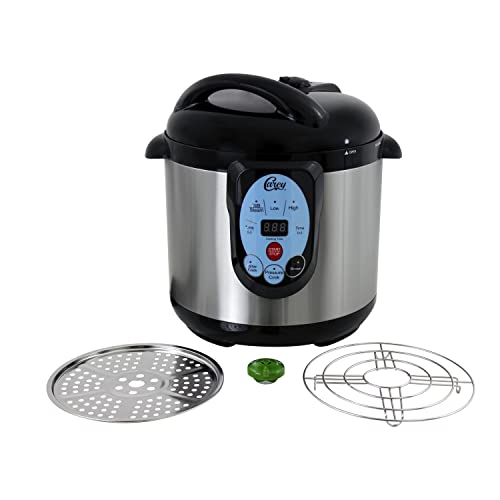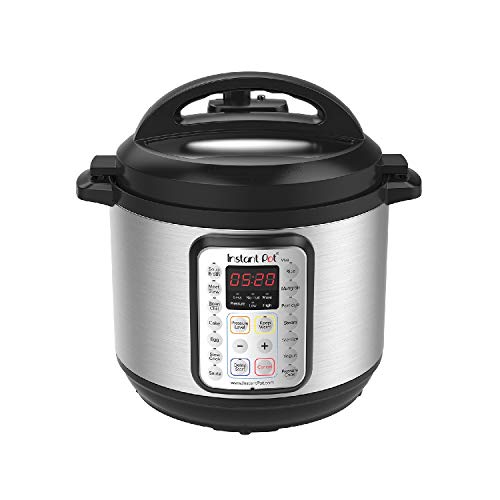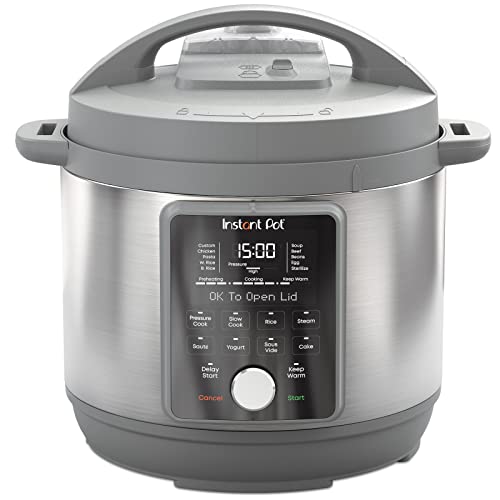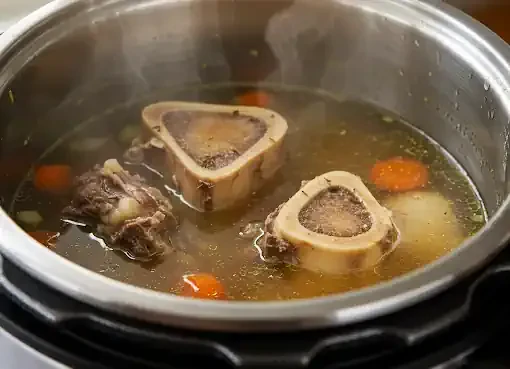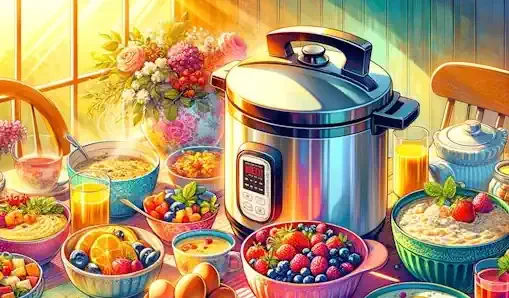Introduction
In the bustling universe of culinary innovation, pressure cookers stand out as indispensable tools for home chefs and professional cooks alike. With their ability to drastically reduce cooking times while intensifying flavors, pressure cookers have earned a permanent place in kitchens worldwide. Whether you're a busy parent seeking to streamline meal preparation or an adventurous food enthusiast eager to experiment with new recipes, understanding how to choose the right pressure cooker is crucial for achieving culinary success.
A pressure cooker is a sealed cooking vessel that utilizes steam pressure to cook food quickly and efficiently. By trapping steam within the pot, pressure cookers raise the boiling point of water, allowing food to cook at higher temperatures and speeds than traditional methods. This accelerated cooking process not only saves time but also preserves the nutrients and natural flavors of ingredients, resulting in healthier and more delicious meals.
The benefits of using a pressure cooker extend beyond efficiency and flavor. These versatile appliances are capable of cooking a wide range of dishes, from soups and stews to grains and desserts, with consistent and reliable results. Additionally, pressure cooking requires less water compared to conventional methods, helping to conserve energy and reduce cooking costs in the long run.
However, not all pressure cookers are created equal, and selecting the right one for your needs is essential to maximizing its potential. Factors such as size, material, and features should be carefully considered to ensure that your pressure cooker meets your cooking preferences and lifestyle requirements. Whether you're a novice cook or a seasoned pro, choosing the right pressure cooker can make all the difference in the quality and efficiency of your culinary endeavors.
Section 1: Understanding Pressure Cookers
Pressure cookers are marvels of modern cooking technology, designed to expedite the cooking process while enhancing the flavors and nutritional value of your meals. Understanding the basics of pressure cookers is the first step towards making an informed purchase decision.
Definition and Basic Operating Principle:
A pressure cooker is a sealed cooking vessel that utilizes steam pressure to cook food rapidly. This sealed environment raises the boiling point of water, allowing food to cook at higher temperatures than usual. As a result, cooking times are significantly reduced, making pressure cookers ideal for busy individuals or those seeking to minimize time spent in the kitchen. The basic operating principle revolves around the combination of high pressure and trapped steam, which tenderizes tough cuts of meat, softens beans and legumes, and ensures thorough cooking of ingredients in a fraction of the time it would take using traditional cooking methods.
Types of Pressure Cookers:
Pressure cookers come in two main types: stovetop and electric. Stovetop pressure cookers are placed directly on the stovetop and heated using a conventional gas or electric burner. They offer precise control over cooking temperatures and are typically favored by experienced cooks for their versatility and reliability. On the other hand, electric pressure cookers, also known as multicookers, feature built-in heating elements and digital controls for easy operation. These appliances often come with additional cooking functions, such as sautéing, steaming, and slow cooking, making them suitable for users who prefer the convenience of a multifunctional appliance.
Advantages of Using a Pressure Cooker:
The benefits of using a pressure cooker are manifold. Firstly, pressure cookers excel in cooking speed, drastically reducing cooking times for a wide range of dishes. Whether you're preparing hearty soups, tender meats, or flavorful grains, a pressure cooker can cut down cooking times by up to 70%, allowing you to enjoy your favorite meals in a fraction of the time.
Moreover, pressure cooking retains more nutrients compared to traditional cooking methods. The shorter cooking times and sealed environment help preserve vitamins, minerals, and other essential nutrients that may be lost through prolonged boiling or steaming. As a result, pressure-cooked meals are not only faster but also healthier, ensuring that you get the most out of your ingredients.
Additionally, pressure cookers are highly energy-efficient, consuming less electricity or gas compared to conventional cooking appliances. The shorter cooking times mean less time spent with the stove or oven turned on, reducing energy consumption and lowering utility bills in the long run. By harnessing the power of steam pressure, pressure cookers offer a sustainable and eco-friendly cooking solution for modern households.
Understanding the different types and advantages of pressure cookers is crucial for making an informed purchasing decision. Whether you opt for a stovetop model for its precision and versatility or an electric multicooker for its convenience and multifunctionality, investing in a quality pressure cooker can revolutionize your cooking experience and unlock a world of culinary possibilities.
Section 2: Factors to Consider When Buying a Pressure Cooker
When venturing into the world of pressure cookers, navigating through the myriad of options can be overwhelming. To ensure you make the best choice for your cooking needs, it's essential to consider several key factors before making a purchase.
Size and Capacity:
Selecting the right size pressure cooker is crucial for efficient cooking and meal preparation. Consider the size of your household and typical batch sizes when choosing a cooker. Smaller families or individuals may find a 4- or 6-quart pressure cooker sufficient, while larger families or those who frequently entertain guests might opt for 8- or 10-quart models. However, it's essential to strike a balance; a cooker too small may limit your cooking capacity, while one too large may require excessive water or ingredients to operate effectively.
Pros and cons of different sizes: Smaller pressure cookers are more space-efficient and may heat up faster due to their smaller volume. However, they may not accommodate larger cuts of meat or bulkier ingredients. Conversely, larger pressure cookers offer greater cooking capacity but may require more storage space and take longer to come to pressure.
Material:
Pressure cookers are commonly made from stainless steel or aluminum, each with its own set of advantages and considerations.
Stainless steel pressure cookers are known for their durability, resistance to corrosion, and non-reactive properties, making them ideal for cooking acidic or alkaline ingredients. They also tend to distribute heat more evenly and retain their appearance over time. However, stainless steel pressure cookers may be more expensive than their aluminum counterparts.
Aluminum pressure cookers are lighter in weight and often more affordable than stainless steel models. They are excellent conductors of heat, allowing for faster cooking times. However, aluminum is prone to scratching and may react with acidic ingredients, leading to discoloration and off-flavors. Additionally, aluminum pressure cookers may not be as durable as stainless steel models.
When choosing between stainless steel and aluminum pressure cookers, consider factors such as durability, heat conductivity, and maintenance requirements to determine which material best suits your needs.
Safety Features:
Safety should be a top priority when selecting a pressure cooker. Look for essential safety features such as pressure indicators, secure locking lids, and pressure release valves. These features help prevent accidents and ensure that the cooker operates safely under pressure.
Modern pressure cookers often come equipped with advanced safety features, such as multiple pressure release mechanisms and automatic shut-off functions. These enhancements offer added peace of mind and further reduce the risk of mishaps during cooking.
Pressure Settings:
Adjustable pressure settings allow for greater versatility in cooking a wide range of recipes. Look for pressure cookers with options for both high and low pressure settings, as certain dishes may require precise control over cooking pressure to achieve optimal results. High pressure is ideal for quickly tenderizing tough cuts of meat and reducing cooking times, while low pressure is suitable for delicate ingredients and gentle cooking.
Extra Features:
Consider additional features that may enhance your cooking experience, such as steamer baskets, non-stick coatings, and digital controls. Steamer baskets are useful for steaming vegetables or cooking multiple dishes simultaneously, while non-stick coatings simplify cleanup and maintenance. Digital controls offer precision and convenience, allowing for programmable cooking times and temperature settings.
When evaluating extra features, assess which ones are essential for your cooking needs and lifestyle, and prioritize accordingly. While certain features may be nice to have, focusing on the functionalities that align with your cooking preferences will ensure that you get the most value out of your pressure cooker investment.
By carefully considering factors such as size, material, safety features, pressure settings, and extra features, you can confidently choose a pressure cooker that meets your cooking needs and enhances your culinary adventures. Whether you're a novice cook or a seasoned chef, investing in the right pressure cooker can unlock a world of delicious possibilities and make meal preparation a breeze.
Section 3: Popular Pressure Cooker Brands and Models
When it comes to purchasing a pressure cooker, choosing from reputable brands can offer assurance of quality, reliability, and customer satisfaction. Here's an overview of some well-regarded pressure cooker brands and a selection of their popular models, along with tips on where to find reliable reviews and product comparisons.
Reputable Pressure Cooker Brands:
Instant Pot: Instant Pot has revolutionized the pressure cooking market with its versatile and user-friendly multicookers. Known for their reliability, safety features, and diverse cooking functions, Instant Pot models have become a staple in many kitchens worldwide.
Fissler: Fissler is a German-based brand renowned for its high-quality stainless steel pressure cookers. With a focus on durability, precision engineering, and innovative features, Fissler pressure cookers are favored by professional chefs and home cooks alike.
Crock-Pot: Crock-Pot offers a range of electric pressure cookers that combine pressure cooking with slow cooking functionality. Known for their convenience and ease of use, Crock-Pot pressure cookers are ideal for busy individuals looking to simplify meal preparation.
Ninja Foodi: Ninja Foodi specializes in multicookers that offer a variety of cooking functions, including pressure cooking, air frying, and crisping. With their versatility and compact design, Ninja Foodi models appeal to users seeking all-in-one cooking solutions.
Popular Models and Key Features:
Instant Pot Duo: The Instant Pot Duo is one of the brand's bestselling models, featuring multiple cooking functions, including pressure cooking, slow cooking, sautéing, and more. With customizable cooking programs and advanced safety features, the Instant Pot Duo offers versatility and peace of mind for users of all skill levels.
Fissler Vitaquick: The Fissler Vitaquick is a premium stovetop pressure cooker known for its durability, precise cooking performance, and innovative design. With features such as a unique locking indicator and removable handle for easy cleaning, the Fissler Vitaquick delivers superior results with every use.
Crock-Pot Express Crock Multi-Cooker: The Crock-Pot Express Crock Multi-Cooker combines the functionality of a pressure cooker, slow cooker, and steamer in one appliance. With easy-to-use digital controls and a variety of pre-programmed cooking settings, this model offers convenience and versatility for busy households.
Ninja Foodi 8-Quart 9-in-1 Deluxe XL Pressure Cooker: The Ninja Foodi Deluxe XL Pressure Cooker boasts nine cooking functions, including pressure cooking, air frying, and roasting. With its large capacity and crisping lid, this model is perfect for cooking family-sized meals with ease.
Finding Reliable Reviews and Comparisons:
When researching pressure cooker models, it's essential to read reviews from reputable sources to make an informed decision. Websites such as Consumer Reports, Wirecutter, and Amazon provide comprehensive reviews and comparisons of popular pressure cooker models, highlighting their pros and cons, performance, and value for money. Additionally, user reviews on retail websites and cooking forums can offer valuable insights from real-world experiences.
Before making a purchase, consider factors such as cooking capacity, features, and budget to find the pressure cooker that best suits your needs and preferences. By investing in a quality pressure cooker from a reputable brand, you can enjoy delicious and nutritious meals with ease and confidence for years to come.
Section 4: Where to Buy a Pressure Cooker
When it comes to purchasing a pressure cooker, you have several options, including buying from physical stores or online platforms. Each method has its advantages and drawbacks, and considering your preferences and circumstances can help you make the best choice.
Buying from Physical Stores vs. Online Platforms:
Physical Stores:
Pros:
Immediate Gratification: You can take your pressure cooker home the same day, avoiding the wait for shipping.
Hands-On Experience: Physical stores allow you to see and touch the pressure cooker before buying, helping you assess its size, weight, and build quality.
Personalized Assistance: Sales associates can offer guidance and answer questions about different models, features, and usage.
Cons:
Limited Selection: Physical stores may have a smaller variety of pressure cooker models compared to online platforms.
Potentially Higher Prices: Prices at physical stores may be higher due to overhead costs, although this isn't always the case.
Inconvenience: Visiting multiple stores to compare options can be time-consuming and may require travel.
Online Platforms:
Pros:
Wide Selection: Online platforms offer a vast array of pressure cooker models, brands, and configurations, giving you access to a broader range of options.
Convenience: You can shop for a pressure cooker from the comfort of your home, at any time of day or night, without having to travel to a physical store.
Competitive Pricing: Online platforms often have lower prices than physical stores due to lower overhead costs and frequent sales and discounts.
Cons:
Shipping Time: Depending on the shipping method chosen, you may have to wait several days or more to receive your pressure cooker.
Lack of Hands-On Experience: You won't be able to physically examine the pressure cooker before buying, which may make it harder to assess its quality and features.
Potential for Fraud: When buying from lesser-known online sellers, there's a risk of receiving counterfeit or low-quality products. Stick to reputable retailers to mitigate this risk.
Recommendations for Trusted Retailers and Online Marketplaces:
Physical Stores:
Kitchen appliance retailers such as Williams Sonoma, Sur La Table, and Bed Bath & Beyond often have a selection of pressure cookers from reputable brands.
Department stores like Macy's and Sears may also carry pressure cookers in their home goods sections.
Online Platforms:
Amazon: Amazon offers a vast selection of pressure cookers from various brands, with user reviews and ratings to help you make an informed decision.
Walmart: Walmart.com features a wide range of pressure cookers at competitive prices, with options for home delivery or in-store pickup.
Best Buy: Best Buy carries pressure cookers from top brands, with the option to shop online or visit a local store for assistance.
Tips on Finding the Best Deals and Discounts:
Sign up for newsletters or loyalty programs: Many retailers offer discounts or exclusive deals to subscribers.
Keep an eye out for seasonal sales events: Retailers often discount kitchen appliances during holiday sales like Black Friday, Cyber Monday, and Memorial Day.
Compare prices across multiple retailers: Use price comparison tools or browser extensions to ensure you're getting the best deal.
Check for manufacturer rebates or promotions: Some brands offer cashback or rebate offers on select models, which can help you save even more.
Regardless of whether you choose to buy from a physical store or an online platform, take the time to research different models, read reviews, and compare prices to find the pressure cooker that best meets your needs and budget. By weighing the pros and cons of each purchasing method and following these tips, you can make a smart and informed decision when buying a pressure cooker.
Section 5: Caring for Your Pressure Cooker
Investing in a quality pressure cooker can revolutionize your cooking experience, but proper care and maintenance are essential to ensure its longevity and optimal performance. Here are some basic guidelines for caring for your pressure cooker, including maintenance tips, cleaning and storage advice, and common troubleshooting tips for typical issues.
Basic Maintenance Tips:
Regular Inspection: Before each use, inspect your pressure cooker for any signs of damage, such as cracks, dents, or worn-out gaskets. Addressing issues promptly can prevent potential safety hazards and extend the lifespan of your cooker.
Lubricate Moving Parts: Periodically lubricate the handles, valves, and sealing rings with food-grade lubricant to ensure smooth operation and prevent rust or corrosion.
Avoid Overfilling: Follow the manufacturer's guidelines regarding maximum fill levels to prevent overpressure and potential damage to the cooker.
Replace Sealing Rings: Over time, the sealing ring of your pressure cooker may become worn or damaged. Replace it as needed to maintain a proper seal and prevent steam leakage.
Store Properly: Store your pressure cooker in a cool, dry place away from direct sunlight and moisture to prevent rust and deterioration of components.
Cleaning and Storage Advice:
Clean After Each Use: After cooking, allow the pressure cooker to cool down before disassembling and cleaning. Wash the pot, lid, and sealing ring with warm, soapy water and a non-abrasive sponge or cloth.
Remove Food Debris: Pay special attention to removing any food debris or residue from the pressure release valves and other crevices to prevent clogs and ensure proper functioning.
Deep Cleaning: Periodically perform a deep clean by soaking the removable parts in a mixture of water and white vinegar to remove stubborn stains or odors. Rinse thoroughly before reassembling.
Air Dry Thoroughly: Ensure all parts are completely dry before reassembling and storing to prevent mold or mildew growth.
Store Lid Properly: Store the pressure cooker with the lid in the open position to allow air circulation and prevent the formation of odors or mold.
Common Troubleshooting Tips:
Pressure Build-Up Issues: If your pressure cooker fails to build pressure, check for leaks or obstructions in the sealing ring, pressure release valves, or gaskets. Ensure that all parts are properly aligned and tightly sealed.
Steam Leakage: If steam is escaping from the sides of the cooker, inspect the sealing ring for wear or damage and replace if necessary. Also, check that the lid is securely locked in place and that the pressure release valves are clean and unobstructed.
Overcooking: If your food is consistently overcooked, adjust the cooking time or pressure settings accordingly. Experiment with shorter cooking times or lower pressure levels until you achieve the desired results.
Burnt Food: If food becomes burnt or scorched during cooking, reduce the cooking temperature or add more liquid to the pot to prevent sticking and burning. Avoid cooking highly starchy foods like rice or pasta directly on the bottom of the pot to minimize the risk of burning.
By following these care and maintenance tips, you can ensure that your pressure cooker remains in optimal condition for years to come, providing you with countless delicious meals and culinary adventures. Remember to consult the manufacturer's instructions and guidelines for specific care recommendations tailored to your pressure cooker model.
Conclusion
In this comprehensive guide on how to buy a pressure cooker, we've explored various aspects to consider before making your purchase. From understanding the basics of pressure cookers and their benefits to evaluating factors such as size, material, safety features, and additional functionalities, we've provided valuable insights to help you make an informed decision.
We discussed the importance of choosing the right size pressure cooker based on your cooking needs, as well as the pros and cons of different materials like stainless steel and aluminum. We highlighted the significance of safety features and adjustable pressure settings for optimal cooking performance and versatility. Additionally, we provided recommendations for reputable brands, popular models, and trusted retailers to aid you in your search.
Before making your final decision, we encourage you to carefully consider all the factors discussed in this article. Take into account your cooking preferences, lifestyle, and budget to ensure that the pressure cooker you choose aligns with your needs and expectations.
Investing in a good quality pressure cooker can truly elevate your cooking experience, saving you time and energy while producing delicious and nutritious meals with ease. Whether you're a busy parent, an aspiring chef, or a cooking enthusiast, a pressure cooker can become an indispensable tool in your kitchen, unlocking a world of culinary possibilities.
FAQs:
Q: What size pressure cooker should I buy?
A: The size of the pressure cooker you choose depends on your household size and typical batch sizes. Smaller families may find 4- or 6-quart pressure cookers sufficient, while larger families or frequent entertainers may opt for 8- or 10-quart models.
Q: Is stainless steel or aluminum better for a pressure cooker?
A: Both stainless steel and aluminum pressure cookers have their advantages. Stainless steel is durable, non-reactive, and distributes heat evenly, while aluminum is lightweight, conducts heat well, and is more affordable. Choose the material that best suits your cooking preferences and needs.
Q: Are electric pressure cookers as good as stovetop pressure cookers?
A: Electric pressure cookers offer convenience and ease of use, while stovetop pressure cookers provide precise control over cooking temperatures. Both types can produce excellent results, so it ultimately comes down to personal preference and cooking style.
Q: How do I clean and maintain my pressure cooker?
A: After each use, wash the pressure cooker's pot, lid, and sealing ring with warm, soapy water and a non-abrasive sponge. Periodically inspect and replace the sealing ring if worn, and lubricate moving parts as needed. Store the pressure cooker in a cool, dry place away from direct sunlight and moisture to prevent rust and deterioration.
With these considerations in mind, we hope you feel empowered to select the perfect pressure cooker for your kitchen. Happy cooking!
Common Questions and Concerns About Buying and Using a Pressure Cooker
Buying and using a pressure cooker can seem intimidating, especially if you're new to this versatile kitchen appliance. Here, we address some common questions and concerns to help alleviate any apprehensions you may have:
Is pressure cooking safe?
Yes, pressure cooking is safe when used correctly. Modern pressure cookers are equipped with multiple safety features, such as pressure indicators, secure locking lids, and pressure release valves, to ensure safe operation. By following the manufacturer's instructions and guidelines, you can use your pressure cooker with confidence.
Will my food taste different when cooked in a pressure cooker?
Pressure cooking is known for intensifying flavors and tenderizing tough cuts of meat, resulting in delicious and flavorful meals. However, the taste and texture of certain foods may vary slightly compared to traditional cooking methods. With experimentation and practice, you'll learn how to adjust cooking times and flavors to suit your preferences.
Do I need special recipes for a pressure cooker?
While many traditional recipes can be adapted for pressure cooking, there are specific recipes designed specifically for this cooking method. These recipes often provide guidance on cooking times, pressure settings, and ingredient proportions to ensure optimal results. However, you can also experiment with your favorite recipes and adjust them as needed for pressure cooking.
How do I know when it's safe to open the pressure cooker?
Pressure cookers have built-in safety mechanisms that prevent the lid from being opened when there is still pressure inside. Most models feature pressure indicators or locking systems that indicate when it's safe to open the cooker. Follow the manufacturer's instructions and wait for the pressure to release naturally or use the quick-release method before opening the lid.
Can I use a pressure cooker on any stovetop?
Most pressure cookers are compatible with a wide range of stovetops, including gas, electric, ceramic, and induction. However, it's essential to check the manufacturer's specifications to ensure compatibility with your specific stovetop. Some pressure cookers may have limitations or require special adapters for certain stovetop types.
How do I prevent food from burning or sticking to the bottom of the pressure cooker?
To prevent food from burning or sticking, ensure there is enough liquid in the pot to create steam during cooking. Avoid overfilling the pressure cooker and follow recommended cooking times and temperature settings. Additionally, use cooking oils or fats as needed to coat the bottom of the pot and prevent sticking.
Can I leave a pressure cooker unattended while cooking?
While pressure cookers are designed to operate safely, it's essential to exercise caution and never leave a pressure cooker unattended while cooking. Keep an eye on the cooker, especially during the initial build-up of pressure, and follow the manufacturer's instructions for safe use. Avoid distractions and always stay vigilant when using a pressure cooker.
By addressing these common questions and concerns, we hope to provide clarity and confidence as you embark on your journey of buying and using a pressure cooker. With proper understanding and guidance, you'll soon discover the countless benefits and culinary possibilities that this remarkable kitchen appliance has to offer.
